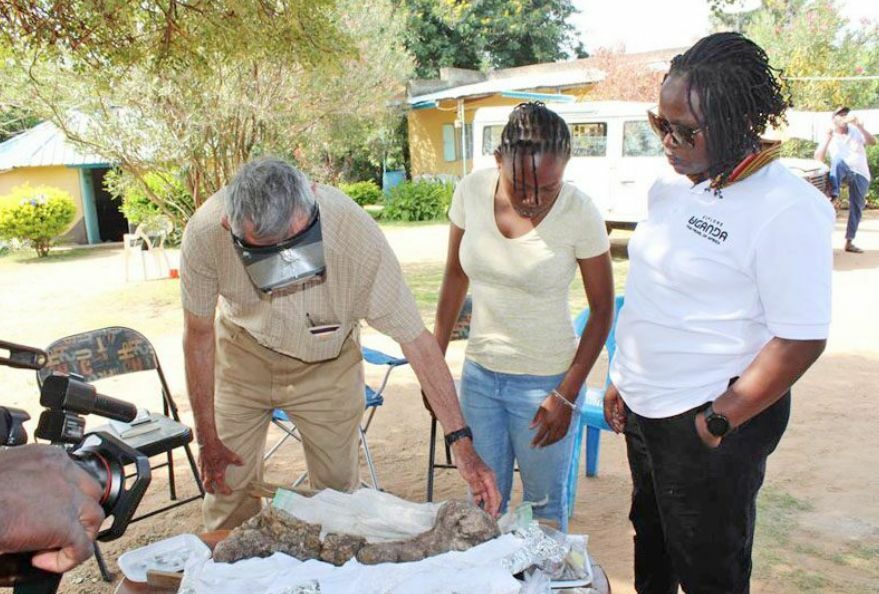Fossil discovery: Ugandan scientists unearth 20 million year old anthracothere fossil, sparking debates

An extraordinary fossil discovery has been reported by a team of Ugandan scientists who’ve unearthed a large femur bone fossil. With an estimated age of approximately 19 to 20 million years, the bone is believed to belong to an anthracothere, an animal akin to a hippopotamus but significantly larger in height and length.
The fascinating fossil discovery came from the Napak district in Uganda’s northern Karamoja region. The revelation came from Sarah Musalisi, leading conservator of museums and monuments at Uganda’s Ministry of Tourism, Wildlife, and Antiquities, who confirmed that the discovery was made approximately a week ago.
The creature behind this bone was identified as an anthracothere based on published studies surrounding these colossal beings. Resembling the hippopotamus, anthracotheres were aquatic creatures, with a more significant stature and length. Musalisi said…
“These animals dwelled in an environment akin to water bodies, similar to hippopotamus, albeit taller and longer.
“Karamoja is identified as a semi-arid region, but there appears to have been various unidentified rivers coursing through it. The environment has altered, generating questions surrounding the mechanisms behind such transformations.”
This new fossil discovery could stimulate the inception of renewed policies in line with environmental protection. Additionally, it could result in a spike in the number of tourists visiting Uganda, driven by the allure of viewing the massive bones of creatures that roamed the earth millions of years ago, reported KhaoSod.
The unearthed fossil will be relocated to Uganda’s national museum for further study. Musalisi added…
“This discovery has the potential to influence the development of new policies aligned with environmental protection. It’s also projected to prompt an increase in the number of tourists to the East African country.
“The scientists identified the animal type based on the published anthracothere research. Research indicates this animal inhabited an environment akin to an aquatic setting. It bore a resemblance to a hippopotamus, but it was taller and longer.”
Latest Thailand News
Follow The Thaiger on Google News:


























